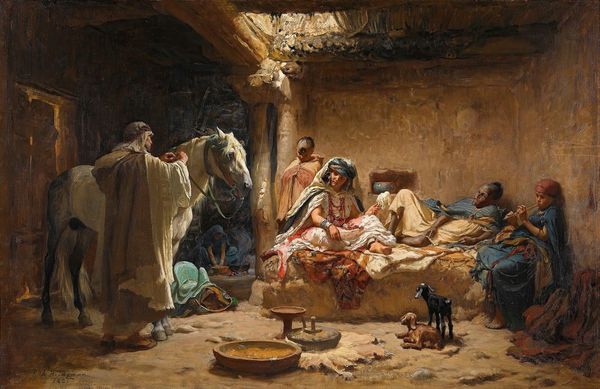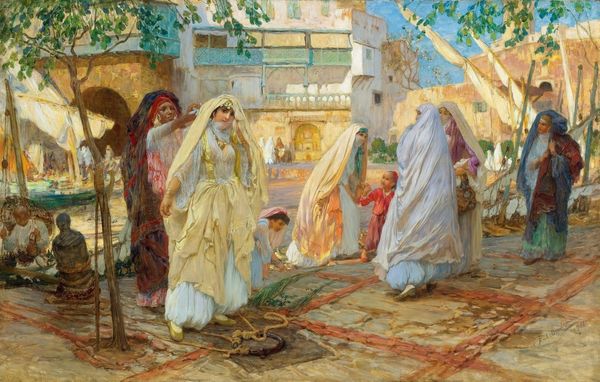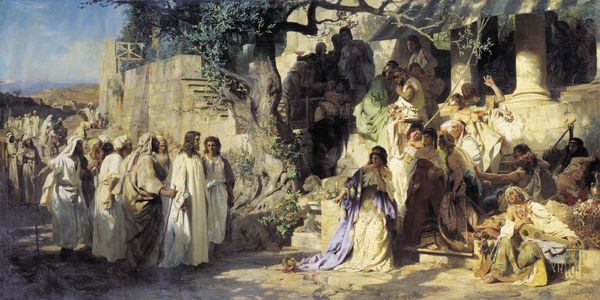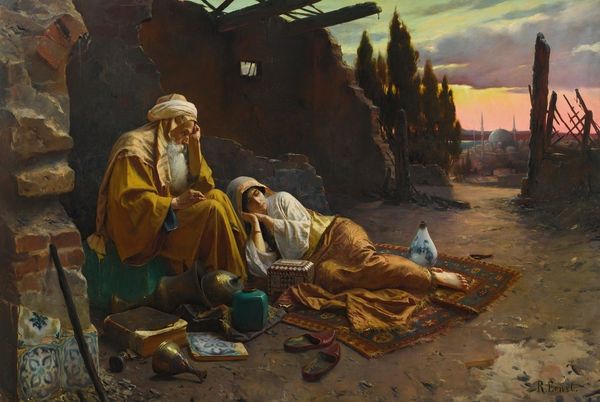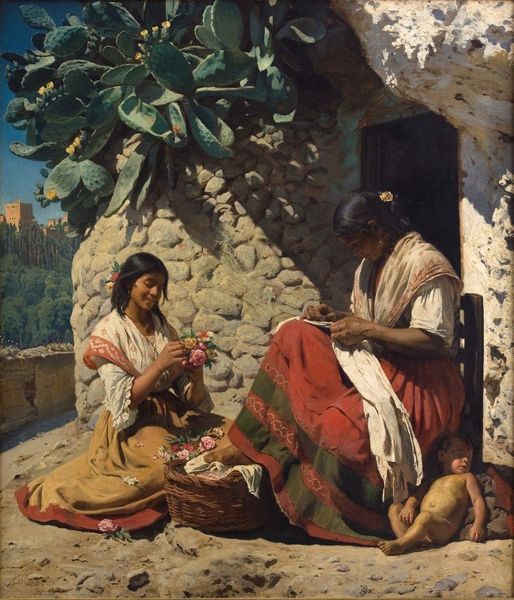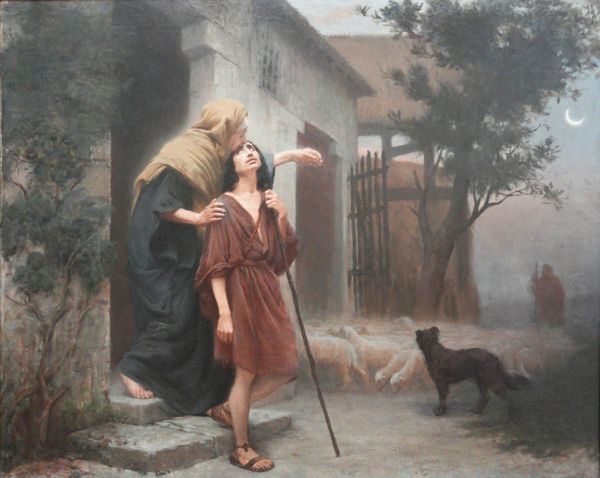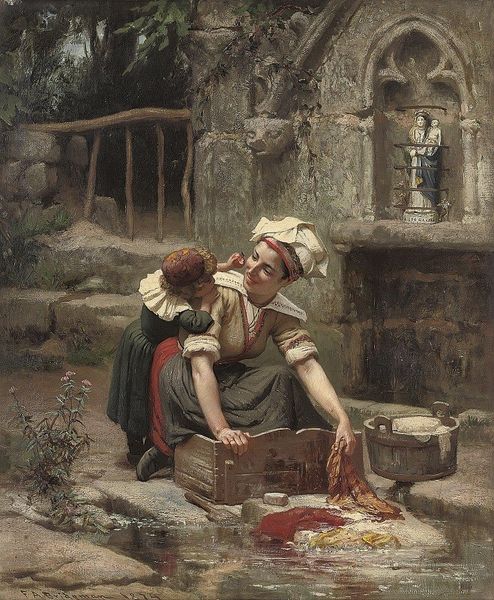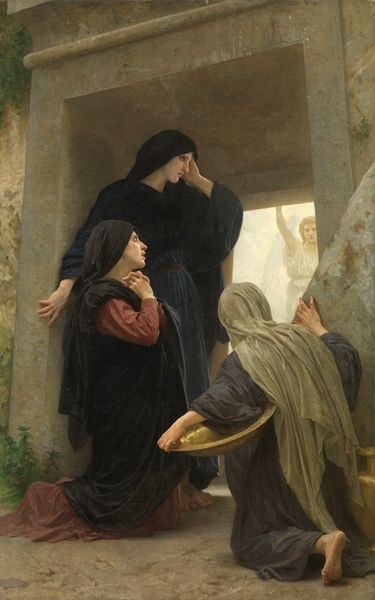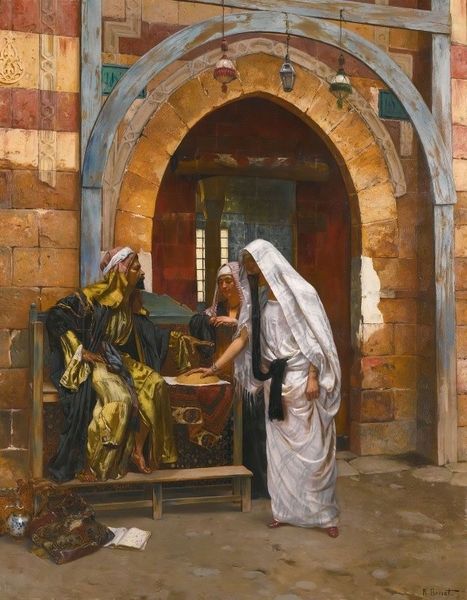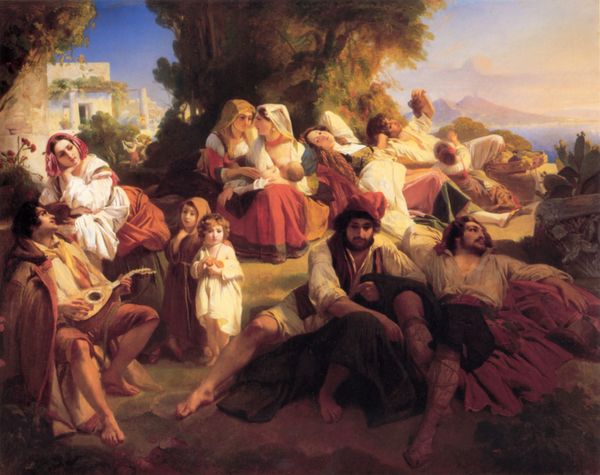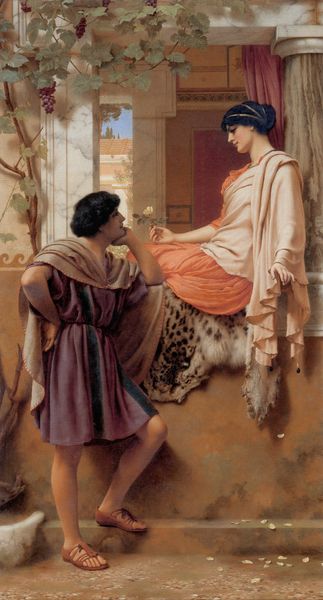
Copyright: Public domain
Curator: Henryk Siemiradzki's 1886 painting, "Christ in the House of Martha and Mary," is quite striking, isn't it? The painting's a beautiful example of academic art with elements of realism and historical painting. Editor: Yes, it's immediately impactful. The texture in the fabrics is wonderfully rendered. The lighting seems intentionally gentle. You can almost feel the warm afternoon sun. But I'm curious about the labor implied here – all that detail, rendered by hand. What are the gendered implications given the figures represented here and how women are so frequently cast as passive caregivers? Curator: Exactly. Think about the Biblical narrative—the contrast between Martha's active service and Mary's contemplative receptiveness. Siemiradzki uses Baroque style, but the women conform to distinct social expectations. How does the material presentation reinforce ideas of productivity vs. reflection in women's roles and work, reflecting and shaping social hierarchies? What about power structures involved? Editor: It’s right there in the objects they’re surrounded by too! We've got pots, rugs, the hint of a kitchen… This is where material culture shapes lived experience. And don't forget Siemiradzki, who spent his career creating paintings for elite buyers who believed it embodied what he wanted them to think. Curator: I'm glad you brought up the buyer because its history reveals so much about Victorian piety and the gendering of moral work at home! Consider the reception of a woman depicted at work versus a woman depicted learning and internalizing wisdom. Do we see the artist subtly making a comment or endorsing certain ideals of womanhood? Editor: Exactly! And what was the labor situation and social history of art at the time of painting's manufacture and consumption? Academic art had such defined tiers in terms of status and the labor division within those tiers—from the person grinding the paint to the understudies! Curator: Seeing the canvas in that light—reflecting social expectation, moralizing narratives about feminine labor… It invites a richer engagement. I'd initially approached it from the established iconography. Editor: The painting speaks beyond biblical interpretation. It's a powerful representation of societal expectation and lived experience manifested through labor and the physical items that surrounded daily routines. Thank you!
Comments
No comments
Be the first to comment and join the conversation on the ultimate creative platform.
